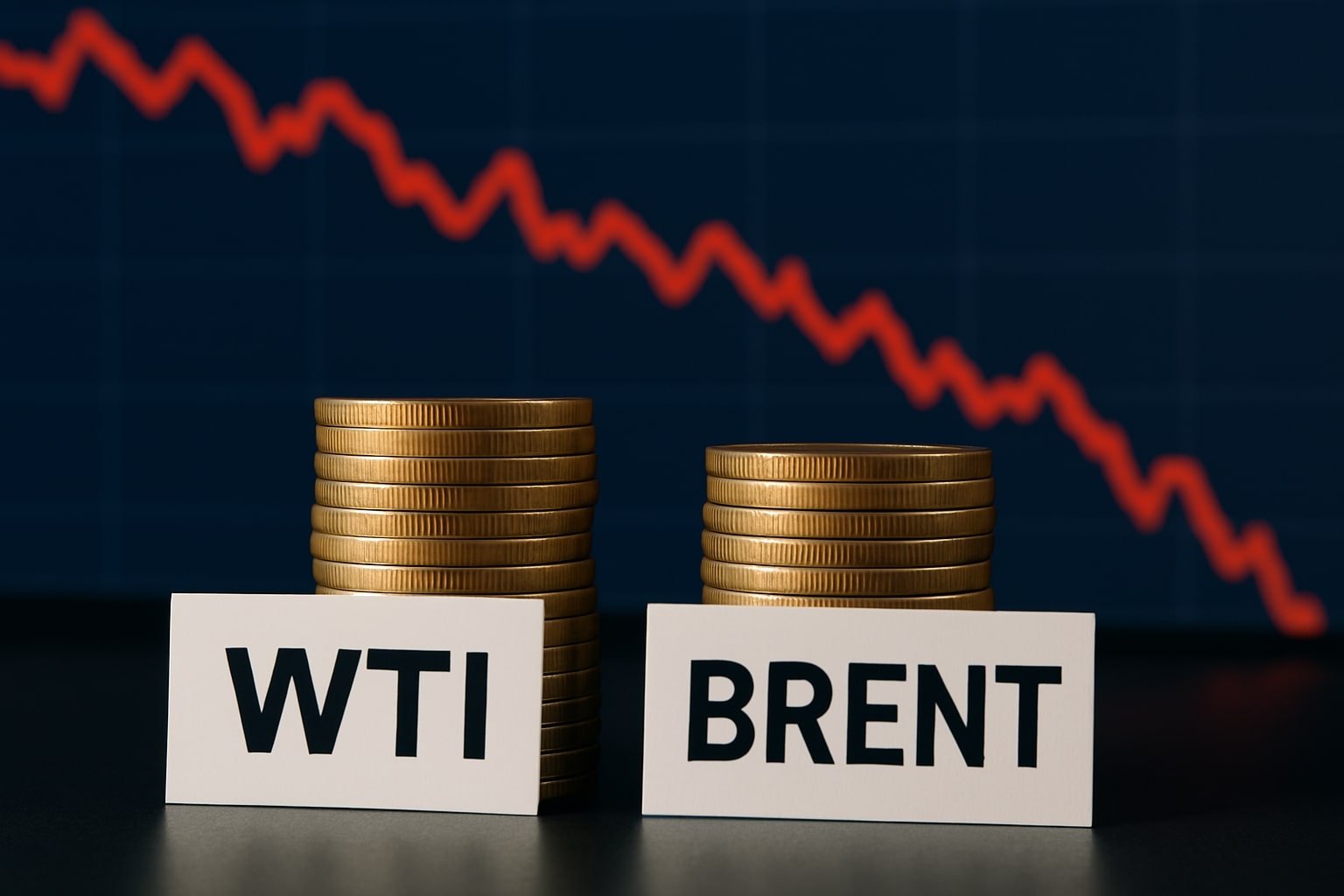
WTI and Brent Oil Prices Set to Decline Further: What’s Next for Oil Prices in 2025?
How Low Will WTI and Brent Oil Prices Fall in 2025? Will OPEC+ Actions and Global Risks Push Prices Below $60? | That's TradingNEWS
Oil Price Trends and Market Impact: OPEC+ Adjustments and Economic Pressures
The global oil market is facing significant pressures in 2025. Recently, Brent crude and WTI have seen declines due to higher production from OPEC+ and a weakening demand outlook. On Monday, Brent crude was trading at around $65, while West Texas Intermediate (WTI) futures were hovering just above $61. These declines come after JP Morgan and the U.S. Energy Information Administration (EIA) slashed their price forecasts for both Brent and WTI due to increasing production from the OPEC+ alliance, coupled with a mild recession risk globally.
OPEC+ Production Surge and Global Oil Demand Outlook
In a significant market shift, OPEC+ has ramped up oil production, putting further pressure on global oil prices. According to JP Morgan, the cartel’s increased output, along with a revised global demand forecast of just 0.8 million barrels per day (mbd), is set to create a substantial oil surplus. With demand growth expected to be slower than originally anticipated, Brent crude could potentially fall below $60 per barrel by the end of the year. Meanwhile, the EIA predicts that Brent crude will average $67.87 per barrel in 2025, with further declines expected into 2026, where it could average as low as $61.48 per barrel.
The U.S. oil market is similarly under strain. The WTI price outlook has also been downgraded, with forecasts for 2025 now set at $62 per barrel, down from an earlier forecast of $69. With the global oil market being shaped by these multiple forces, OPEC+ faces challenges in stabilizing prices. While OPEC+ production is slated to increase by approximately 1 million barrels per day in the coming months, the organization may need to make additional cuts to stabilize prices, particularly as economic uncertainty looms large.
Global Economic Turmoil and Its Effect on Oil Prices
The ongoing U.S.-China trade war has exacerbated fears of a global recession, which in turn affects oil demand. The EIA points to a global inventory buildup starting in Q2 2025, as oil supply outpaces demand. As a result, the agency forecasts a further downward trend for oil prices, with Brent crude expected to decline to $64 per barrel by Q4 2025, continuing into 2026 with even lower projections. In fact, Goldman Sachs has echoed these concerns, slashing its oil price forecast to $63 for 2025 and $58 in 2026, driven by OPEC+ production increases and continued geopolitical risk.
As oil prices hover near the $60 mark, Ecopetrol is feeling the pressure. The Colombian oil giant warned that a significant drop in prices could force it to halt production in up to 30 oil fields, especially as the breakeven prices for these fields approach $60 per barrel. While these fields represent a smaller portion of the company’s total output, the oil price slump could still have significant repercussions for profitability, with estimates of a 12 trillion pesos loss in 2025 due to declining prices.
Oil Price Volatility and Risk Factors for 2025
As the oil market continues to face volatility, WTI and Brent crude are highly sensitive to any changes in global economic sentiment. The likelihood of a mild recession, combined with higher oil output from OPEC+, indicates that the risk of further price declines remains high. Goldman Sachs has suggested that oil prices could even drop to the $40s in an extreme scenario, especially if OPEC+ further lifts its production caps.
From a technical standpoint, WTI crude has managed to gain over 1% recently, trading just below the $61 mark. However, analysts believe that any short-term rallies may be capped, with prices expected to remain range-bound in the $60-$65 region. Brent crude faces similar technical resistance and could struggle to break the $70 barrier. WTI has seen some positive movement, but experts advise caution, as the overall market sentiment is weighed down by broader economic challenges, including trade wars and geopolitical risks.
Future Outlook for WTI and Brent: Price Projections for 2025 and Beyond
Looking ahead, Standard Chartered has raised its price target for Brent crude to $77 per barrel for 2025, citing increased demand for oil from central banks and gold-backed funds. Despite this optimistic forecast, Standard Chartered is still cautious in its outlook for WTI, suggesting that the price will be heavily influenced by global economic trends, especially trade tensions and OPEC+ production levels. Similarly, BMI forecasts Brent crude to average $68 per barrel in 2025 and $71 per barrel in 2026, reflecting the pressures of higher supply and weaker-than-expected demand.
The long-term outlook for WTI and Brent will depend on how OPEC+ handles production levels and how much influence global economic health and tariffs continue to have on the market. With many analysts now predicting continued price weakness, the potential for a recovery is tempered by the ongoing risks of a global slowdown.
Is the Oil Market Set for a Price Decline or Recovery?
Given the current trajectory, the oil market appears poised for a prolonged period of weak prices. With OPEC+ continuing to increase production and global demand remaining soft, WTI and Brent may struggle to see significant upside. Price targets for Brent crude are generally set in the $60-$70 range, with WTI mirroring these levels. While the market faces several risks—recession, trade wars, and supply surpluses—there remains potential for price rallies if OPEC+ takes more drastic action to curb output.
For investors, buying oil at these levels might seem appealing in the short-term, but the downside risk remains significant, and any sharp price swings should be expected in the coming months. With price declines likely to continue through 2025, oil could remain volatile, especially if global production levels continue to rise while demand growth remains muted.
Conclusion: Buy, Sell, or Hold WTI and Brent?
Based on current economic trends and oil market dynamics, it seems bearish for WTI and Brent in the short to medium term. While OPEC+ actions and economic shifts could lead to occasional rallies, the overall outlook suggests that prices will remain lower in 2025. For now, the advice is to hold or sell in anticipation of continued downward pressure. Investors should prepare for further volatility, especially as recessionary risks and geopolitical uncertainties shape the future of oil prices.
















